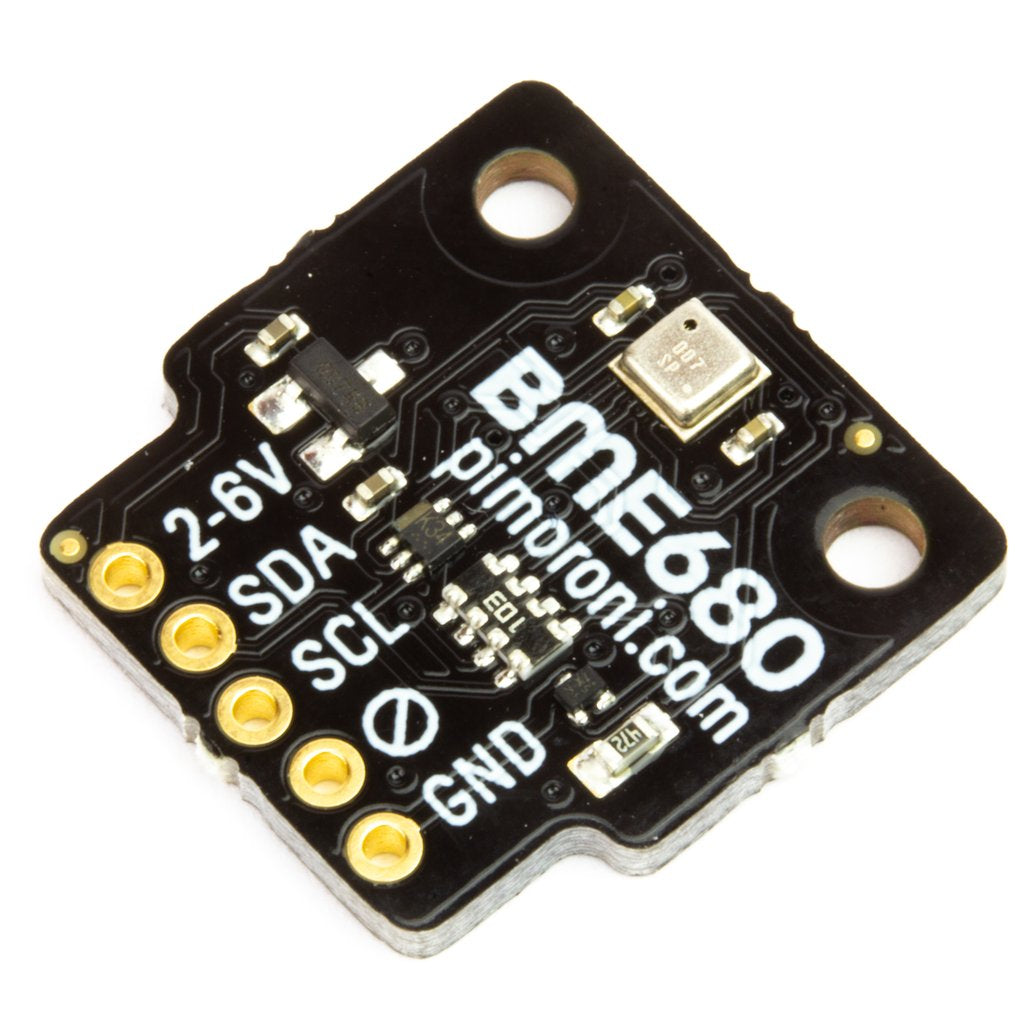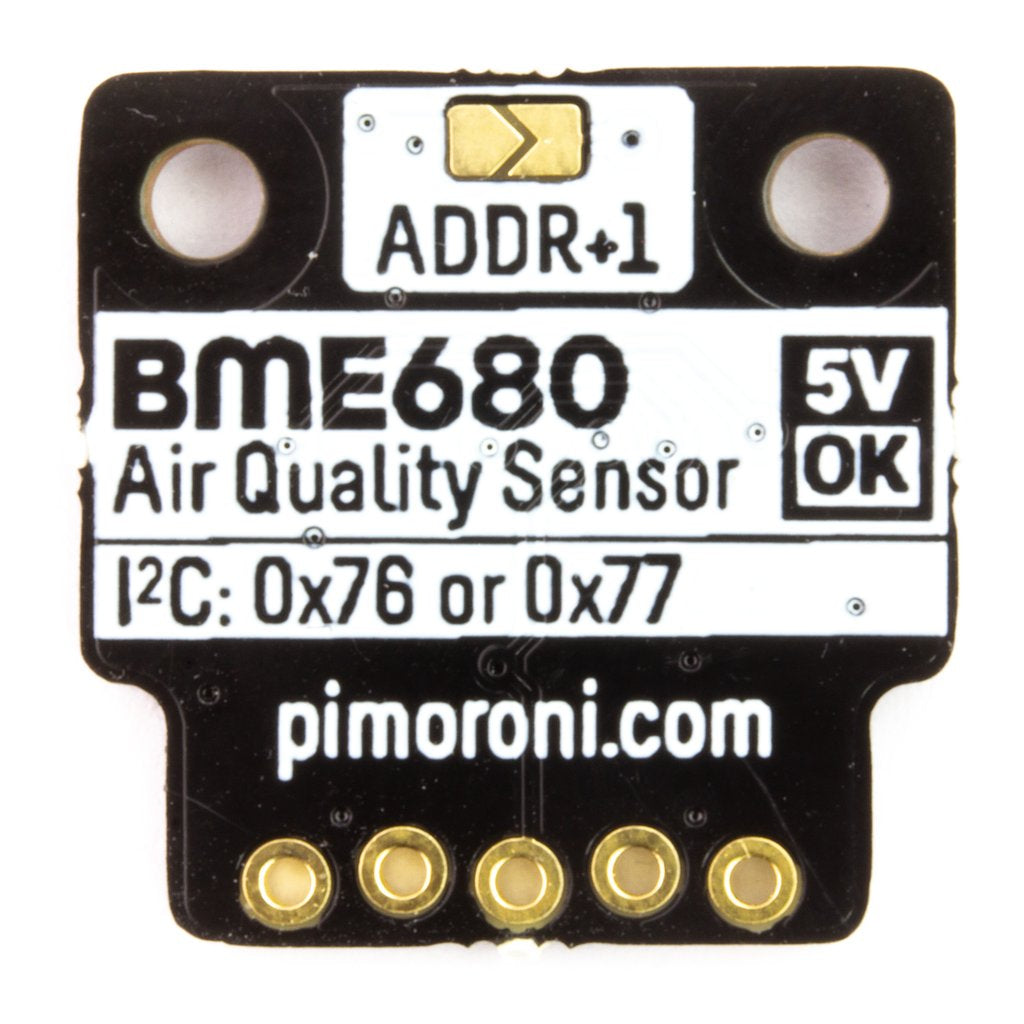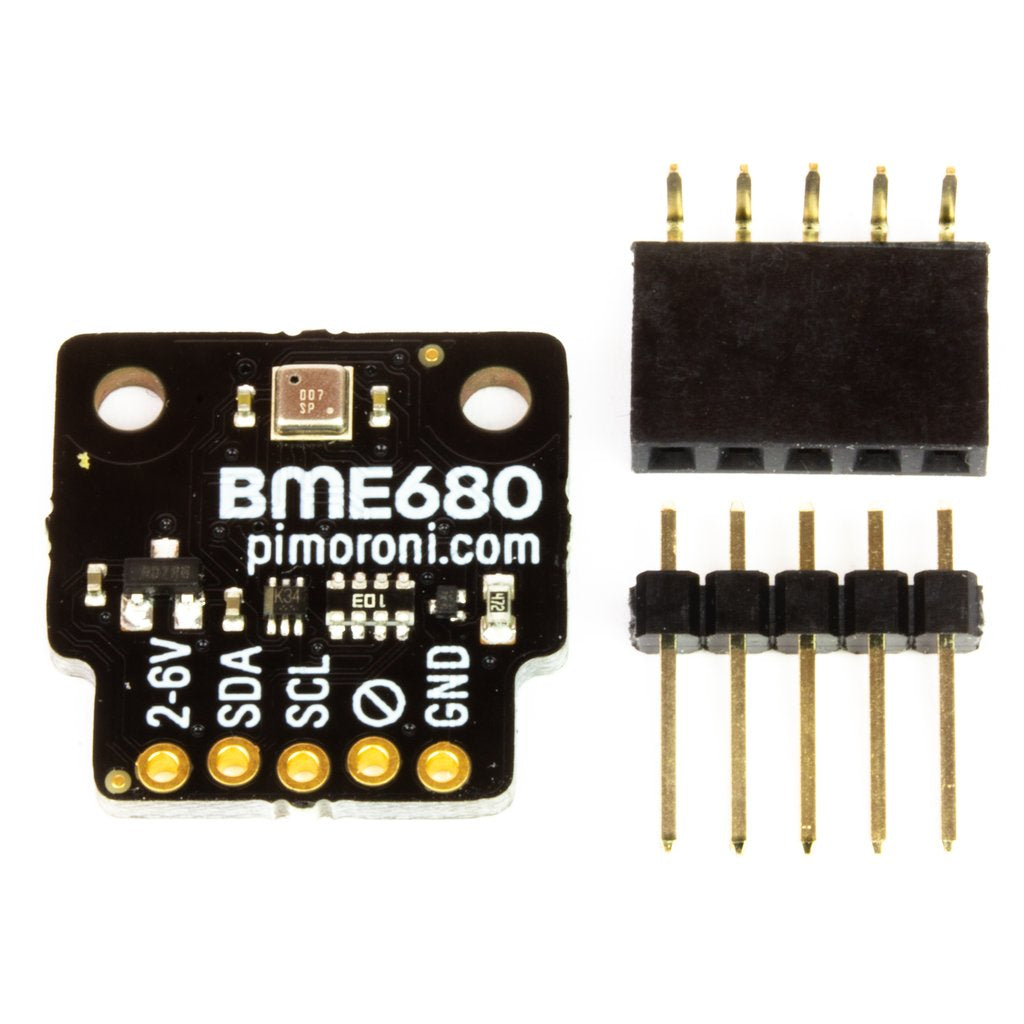Ein Produkt von Pimoroni.
The state-of-the-art BME680 breakout lets you measure temperature, pressure, humidity, and indoor air quality, and is Raspberry Pi and Arduino-compatible!
Use this breakout to monitor every aspect of your indoor environment. Its gas resistance readings will react to changes in volatile organic compounds and can be combined with humidity readings to give a measure of indoor air quality.
Want to get an idea of whether there's adequate ventilation in your bedroom, your workshop, or workplace? Set up a BME680 on a Pi Zero W and have it log sensor readings to a file, or stream live data to a web service like adafruit.io or freeboard.io.
It's also compatible with our fancy Breakout Garden, where using breakouts is as easy just popping it into one of the six slots and starting to grow your project, create, and code.
Features
- Bosch BME680 temperature, pressure, humidity, air quality sensor
- I2C interface, with address select via ADDR solder bridge (0x76 or 0x77)
- 3.3V or 5V compatible
- Reverse polarity protection
- Raspberry Pi-compatible pinout (pins 1, 3, 5, 7, 9)
- Compatible with all models of Raspberry Pi, and Arduino
- Python library
- Datasheet
Kit includes
- BME680 breakout
- 1x5 male header
- 1x5 female right angle header
We've designed this breakout board so that you can solder on the piece of right angle female header and pop it straight onto the bottom left 5 pins on your Raspberry Pi's GPIO header (pins 1, 3, 5, 6, 9). The right angle header also has the advantage of positioning the breakout away from the Pi's CPU so as to minimise radiated heat.
Software
As well as the C library provided by Bosch, we've put together a Python library (with a quick and painless one-line-installer) to use with your BME680, making it straightforward to combine it with our other boards (why not use a Blinkt! or Unicorn pHAT to visualise air quality in real time?)
Notes
- In our testing, we've found that the sensor requires some burn-in time (at least 20 minutes) and that readings may take a couple of minutes to stabilise after beginning measurements
- The solder pads (marked ADDR) can be bridged to change the I2C address from the default of 0x76 to 0x77, meaning that you can use up to two sensors on the same Raspberry Pi or Arduino
- The BME280, BME680, and BMP280 breakouts all share the same I2C addresses, so if you're using two together then you'll need to change the I2C address on one of them using the solder bridge/pads
- Dimensions: 19x19x2.75mm (LxWxH)
Sicherheitsangaben
- Lesen Sie die Bedienungsanleitung sorgfältig durch, bevor Sie das Produkt verwenden.
- Stellen Sie sicher, dass alle Montage- und Installationsanweisungen des Herstellers sorgfältig befolgt werden.
- Verwenden Sie das Produkt nur für den vorgesehenen Zweck.
- Die unsachgemäße Nutzung dieses Produkts kann zu schweren Verletzungen oder Sachschäden führen.
- Nicht für Kinder unter 10 Jahren geeignet.
- Bei unsachgemäßer Verwendung besteht eine Verletzungsgefahr.
- Dieses Produkt entspricht den geltenden Sicherheitsanforderungen der Europäischen Union.
- Dieses Produkt wurde gemäß der GPSR geprüft, die sicherstellt, dass alle relevanten Sicherheitsanforderungen für Konsumgüter eingehalten werden.
Nachverfolgbarkeitsinformationen
Jedes Produkt verfügt über eines oder mehrere der folgenden Merkmale:
- Ein CE-Kennzeichen, das die Einhaltung der Sicherheits-, Gesundheits- und Umweltschutzanforderungen der Europäischen Union anzeigt.
- Eine eindeutige Serien- oder Chargennummer, um die Nachverfolgbarkeit zu gewährleisten und bei Bedarf Rückrufaktionen zu unterstützen.
- Hersteller- und Importeurangaben für den Kundensupport und Sicherheitsanfragen.
Überwachung und Berichterstattung von Vorfällen
Für den unwahrscheinlichen Fall eines Produktproblems haben wir Verfahren implementiert, um:
- Kundenbeschwerden zeitnah bearbeiten.
- Schwerwiegende Vorfälle über das EU Safety Gate/RAPEX-System melden.
- Mit den Marktüberwachungsbehörden zusammenarbeiten, um die öffentliche Sicherheit zu gewährleisten.
Kontakt:
- Email: support [@] pi3g.com
- Telefon: 0341 / 392 858 40
Dieses Produkt ist vollständig mit allen geltenden EU-Vorschriften konform, um die Sicherheit unserer geschätzten Kunden zu gewährleisten.



